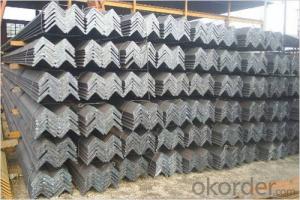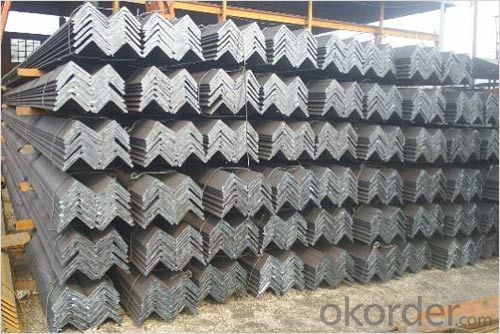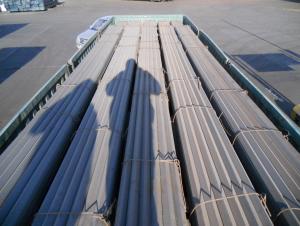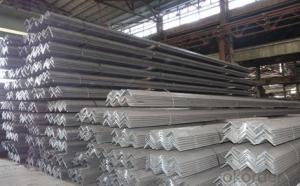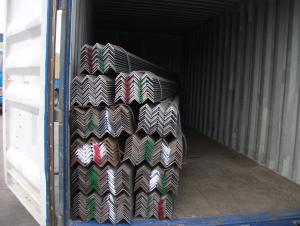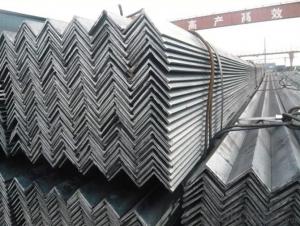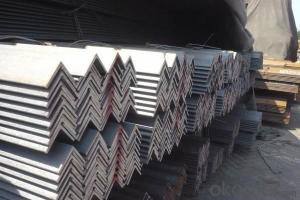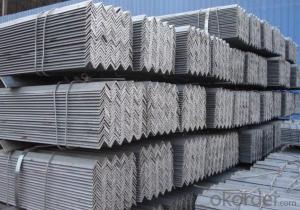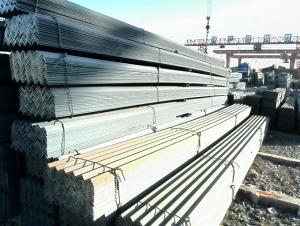Equal Angle Steel Hot rolled JIS G3101 SS400 Mild Steel Angle Iron
- Loading Port:
- Tianjin
- Payment Terms:
- TT or LC
- Min Order Qty:
- 29 m.t.
- Supply Capability:
- 30000 m.t./month
OKorder Service Pledge
OKorder Financial Service
You Might Also Like
Product Description:
OKorder is offering Equal Angle Steel Hot rolled JIS G3101 SS400 Mild Steel Angle Iron at great prices with worldwide shipping. Our supplier is a world-class manufacturer of steel, with our products utilized the world over. OKorder annually supplies products to European, North American and Asian markets. We provide quotations within 24 hours of receiving an inquiry and guarantee competitive prices.
Product Applications:
Equal Angle Steel Hot rolled JIS G3101 SS400 Mild Steel Angle Iron are ideal for structural applications and are widely used in the construction of buildings and bridges, and the manufacturing, petrochemical, and transportation industries.
Product Advantages:
OKorder's Equal Angle Steel Hot rolled JIS G3101 SS400 Mild Steel Angle Iron are durable, strong, and resist corrosion.
Main Product Features:
· Premium quality
· Prompt delivery & seaworthy packing (30 days after receiving deposit)
· Corrosion resistance
· Can be recycled and reused
· Mill test certification
· Professional Service
· Competitive pricing
Product Specifications:
Mild Angle steel
Grade : JIS G3101,SS400/SS540
Size: 25*25--250*250mm
Packing : bulk or container
Delivery time within 25 days .
equal angle steel | unequal angle steel |
specification(mm) | specification(mm) |
25*3/4 | 32*20*3/4 |
30*3/4 | 40*25*3/45*28*3/4 |
40*3/4/5 | 56*36*3/4/5 |
45*3/4/5/6 | 63*40*4/5/6/7 |
50*3/4/5/6 | 70*45*4/5/6/7 |
56*3/4/5/8 | 75*50*5/6/8/10 |
63*4/5/6/8/10 | 80*50*5/6/7/8 |
65*6/7/8/9 | 90*56*5/6/7/8/ |
70*4/5/6/7/8 | 100*63*6/7/8/10 |
75*5/6/7/8/10 | 100*75*6/7/8/9/10/12 |
80*5/6/7/8/10 | 100*80*6/7/8/10 |
90*6/7/8/10/12 | 110*70*6/7/8/10 |
100*6/7/8/10/12/14/16 | 125*75*7/8/9/10/12 |
110*7/8/10/12/14 | 125*80*7/8/10/12 |
120*8/9/10/12 | 140*90*8/10/12/14 |
125*8/10/12/14 | 150*90*9/10/12/15 |
130*9/10/12/13/15 | 150*100*9/12/15 |
140*10/12/14/16 | 160*100*10/12/14/16 |
150*12/15/19 | 180*110*10/12/14/16 |
160*10/12/14/16 | 200*125*12/14/16/18 |
175*12/15 | |
180*12/14/16/18 | |
200*14/16/18/20/24 | |
250*25/35 |
FAQ:
Q1: Why buy Materials & Equipment from OKorder.com?
A1: All products offered byOKorder.com are carefully selected from China's most reliable manufacturing enterprises. Through its ISO certifications, OKorder.com adheres to the highest standards and a commitment to supply chain safety and customer satisfaction.
Q2: How do we guarantee the quality of our products?
A2: We have established an advanced quality management system which conducts strict quality tests at every step, from raw materials to the final product. At the same time, we provide extensive follow-up service assurances as required.
Q3: How soon can we receive the product after purchase?
A3: Within three days of placing an order, we will begin production. The specific shipping date is dependent upon international and government factors, but is typically 7 to 10 workdays.
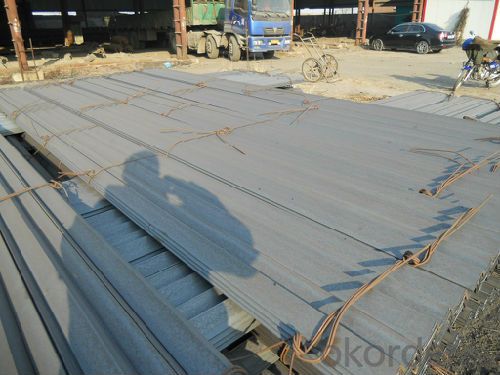

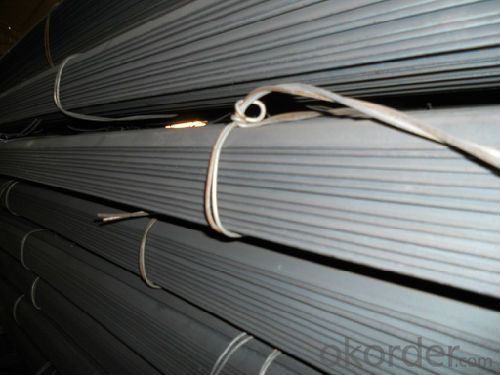
- Q: Can steel angles be painted over?
- Yes, steel angles can be painted over. Prior to painting, it is important to clean and prepare the surface by removing any rust, dirt, or grease. Applying a primer will help improve adhesion and longevity of the paint. Once the primer is dry, a suitable paint can be applied to achieve the desired finish and protect the steel angles from corrosion.
- Q: Can steel angles be used in the construction of shopping malls?
- Yes, steel angles can be used in the construction of shopping malls. Steel angles are commonly used in structural applications, including the construction of commercial buildings like shopping malls. They provide strength, stability, and support, making them a suitable choice for various structural elements such as frames, columns, and beams in shopping mall construction.
- Q: Can steel angles be bent or formed?
- Certainly, it is possible to bend or form steel angles. Steel angles are frequently utilized as structural components, crafted from steel and boasting an L-shaped cross-section. There are multiple techniques available for bending or forming them, including hot or cold bending, rolling, or press-braking. The selection of a specific method hinges on factors like the desired angle, bending radius, as well as the thickness and type of steel employed. By bending or forming steel angles, one can fabricate diverse shapes and angles to meet precise structural or design criteria.
- Q: Can steel angles be used for supporting mechanical equipment?
- Yes, steel angles can be used for supporting mechanical equipment. Steel angles provide structural support, stability, and durability, making them suitable for supporting the weight and load of mechanical equipment. They are commonly used in various industries for this purpose due to their strength and versatility.
- Q: Are there any industry standards or certifications for steel angles?
- Steel angles have industry standards and certifications. The main standard for steel angles is the ASTM standard, specifically the ASTM A36 specification. This specification outlines the necessary chemical composition, mechanical properties, and dimensional tolerances for structural steel angles. Aside from ASTM, other organizations like AISC and SJI also provide guidelines and standards for steel angles used in construction and structural engineering. These standards guarantee that steel angles meet specific requirements in terms of quality, strength, and performance. Moreover, certifications like ISO 9001:2015 and ISO 14001:2015 are widely recognized in the steel industry. These certifications indicate that a manufacturer has implemented a quality management system and complies with environmental management standards. Adhering to these industry standards and certifications is crucial for manufacturers, suppliers, and construction professionals. It ensures the dependability and safety of steel angles in various applications.
- Q: Can steel angles be used for HVAC ductwork?
- Indeed, HVAC ductwork can utilize steel angles. In the construction field, steel angles are frequently employed for diverse purposes, such as acting as supports and reinforcements. In terms of HVAC ductwork, steel angles can serve as a framework, ensuring stability and bolstering the ducts. Through welding or bolting, they can be joined together to create a robust and enduring structure for the ductwork system. Moreover, steel angles can be easily tailored and cut to specific lengths, making them suitable for various configurations of ductwork. Nevertheless, it is crucial to bear in mind that appropriate insulation and lining might be necessary for steel angles to prevent condensation and maintain the desired temperature within the ducts.
- Q: How do steel angles perform in high-temperature environments?
- Steel angles perform well in high-temperature environments due to their high melting point and excellent heat resistance. They retain their structural integrity and strength, making them a suitable choice for applications that require stability and durability in elevated temperatures.
- Q: How do you install steel angles?
- To install steel angles, first, identify the location and purpose of the angles. Measure and mark the desired positions on the surface where they will be installed. Use a level to ensure they are straight. Then, drill pilot holes at the marked positions. Align the angles with the pilot holes and secure them in place using appropriate screws or bolts. Finally, double-check the alignment and tighten the screws/bolts to ensure a secure installation.
- Q: What are the different types of steel angles used in agricultural applications?
- There are several different types of steel angles commonly used in agricultural applications. 1. Equal Angle: This type of steel angle has equal sides and is often used for structural support in agricultural buildings, such as barns and sheds. It provides stability and strength, making it suitable for load-bearing applications. 2. Unequal Angle: As the name suggests, this steel angle has unequal sides, with one side longer than the other. It is commonly used in agricultural machinery, such as tractor attachments and implements. The unequal sides allow for better positioning and attachment of various components. 3. Lipped Angle: Lipped angles are similar to equal angles but have an additional lip or flange on one side. This lip provides added support and rigidity, making it ideal for agricultural applications that require extra strength, such as fencing and gate posts. 4. Slotted Angle: Slotted angles are versatile and can be adjusted to different angles as needed. They are commonly used in agricultural shelving systems, allowing farmers to create custom storage solutions for tools, equipment, and supplies. The slots in the angles provide flexibility for adjusting shelf heights. 5. Rolled Steel Angle: Rolled steel angles are produced by rolling steel into angle-shaped sections. They are commonly used in agricultural construction for bracing, supporting beams, and framing. Rolled steel angles offer high strength and durability, making them suitable for demanding agricultural environments. Each type of steel angle has its unique characteristics and advantages, and the choice depends on the specific agricultural application and the level of strength and support required. It is important to consider factors such as load-bearing capacity, durability, and resistance to corrosion when selecting the appropriate steel angle for agricultural use.
- Q: What are the different types of steel angles used in HVAC systems?
- There are several types of steel angles commonly used in HVAC systems, including L-shaped angles, V-shaped angles, and Z-shaped angles. These angles are used to provide structural support, reinforcement, and stability in ductwork and other HVAC components.
Send your message to us
Equal Angle Steel Hot rolled JIS G3101 SS400 Mild Steel Angle Iron
- Loading Port:
- Tianjin
- Payment Terms:
- TT or LC
- Min Order Qty:
- 29 m.t.
- Supply Capability:
- 30000 m.t./month
OKorder Service Pledge
OKorder Financial Service
Similar products
Hot products
Hot Searches
Related keywords
